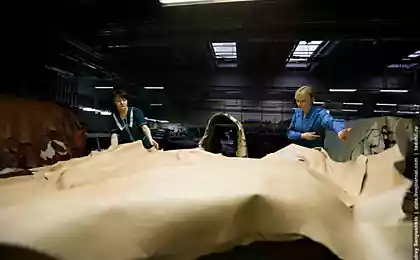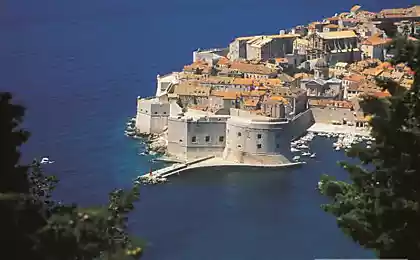336
Tanning in Morocco
The largest workshops for leather processing - tanning and dyeing located in Fez. It is one of the city's main attractions with tourists willing to take money for the opportunity to see how the Moroccans excrete skin of medieval technology. Before blogger Ilya Varlamov Fez did not get, but looked workshops in other cities where the tourists do not go and there is no show.
23 photos
This is the entrance to the workshops. Rubbish, dried skin.

Here is the tanning yard. For a thousand years, little has changed here. Modern chemistry is not used in the production of the famous Moroccan leather. To clean the skins from the wool in the course is good old-fashioned quick lime for softening leathers - pigeon or dog dung and salt.

It smells disgusting, rotting skin, donkey urine, bleach, etc.

04

Flies and other insects flying swarms, I do not know how people work here

Decomposes into the Moroccan sun waiting for their pelts.

07

08
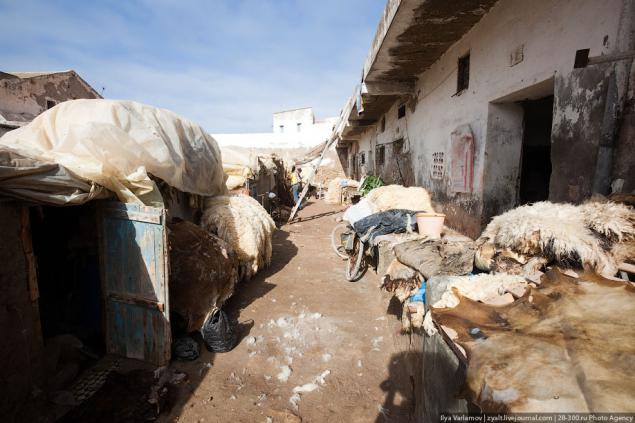
The pretreated skins lowered into large vats with a solution and kept therein day.
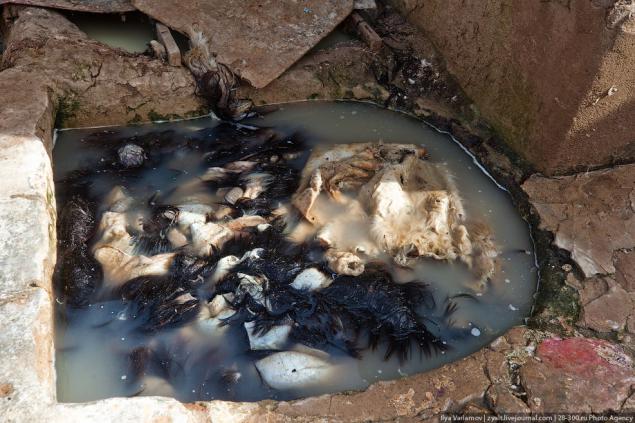
Then transferred into vats, where the concentration of tannins is higher then the other, and so - a few days. The emergence of industrial manufacture has not replaced the labor legs tanners, and those, like the forty generations before them, crumple skin immersed in a solution almost to the waist and smeared the body with olive oil, to somehow protect themselves from tanning agents and toxic dyes . And for a little relief from the usual stench in the nostrils tuck leaves of fresh mint ...

Next, remove the remains of fur.
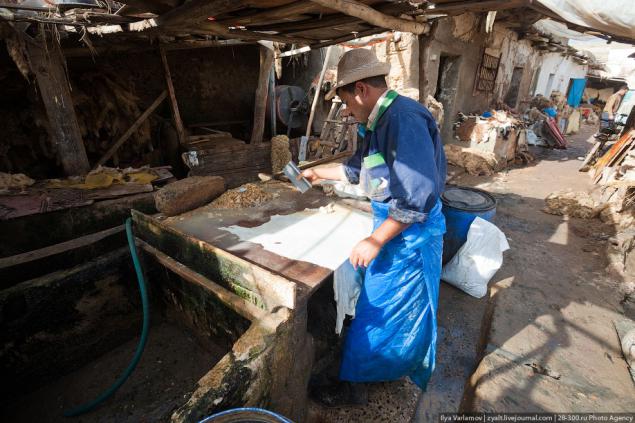
That's the scraper.

Dyes and tannin solutions obtained from plants and minerals. Restriction in the animal feed one - tanner, like a thousand years ago, is entitled to use only the skin of the animals, which are suitable for food Koran ...

14

15

16

Also here separately dried and cooked wool.

18

And these skins go into business without shearing.

The owner shows the finished product.
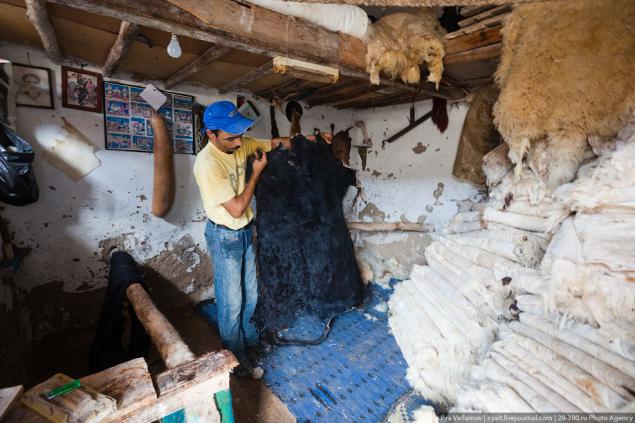
21

22

That's how it is. In colored skin give artisans, who will make of it for leisure bags, lamps, purses and so on.
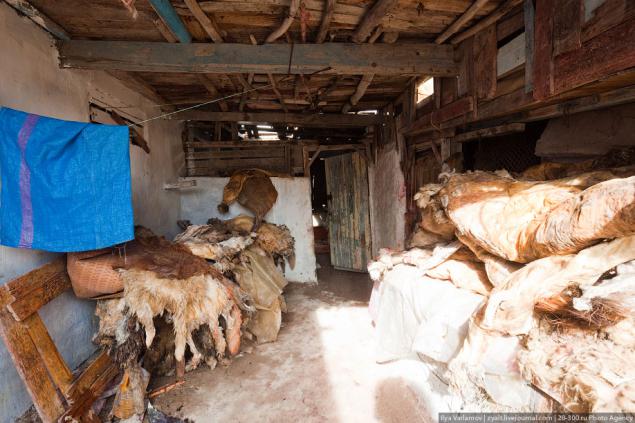
Source:
23 photos
This is the entrance to the workshops. Rubbish, dried skin.

Here is the tanning yard. For a thousand years, little has changed here. Modern chemistry is not used in the production of the famous Moroccan leather. To clean the skins from the wool in the course is good old-fashioned quick lime for softening leathers - pigeon or dog dung and salt.

It smells disgusting, rotting skin, donkey urine, bleach, etc.

04

Flies and other insects flying swarms, I do not know how people work here

Decomposes into the Moroccan sun waiting for their pelts.

07

08

The pretreated skins lowered into large vats with a solution and kept therein day.

Then transferred into vats, where the concentration of tannins is higher then the other, and so - a few days. The emergence of industrial manufacture has not replaced the labor legs tanners, and those, like the forty generations before them, crumple skin immersed in a solution almost to the waist and smeared the body with olive oil, to somehow protect themselves from tanning agents and toxic dyes . And for a little relief from the usual stench in the nostrils tuck leaves of fresh mint ...

Next, remove the remains of fur.

That's the scraper.

Dyes and tannin solutions obtained from plants and minerals. Restriction in the animal feed one - tanner, like a thousand years ago, is entitled to use only the skin of the animals, which are suitable for food Koran ...

14

15

16

Also here separately dried and cooked wool.

18

And these skins go into business without shearing.

The owner shows the finished product.

21

22

That's how it is. In colored skin give artisans, who will make of it for leisure bags, lamps, purses and so on.

Source:

